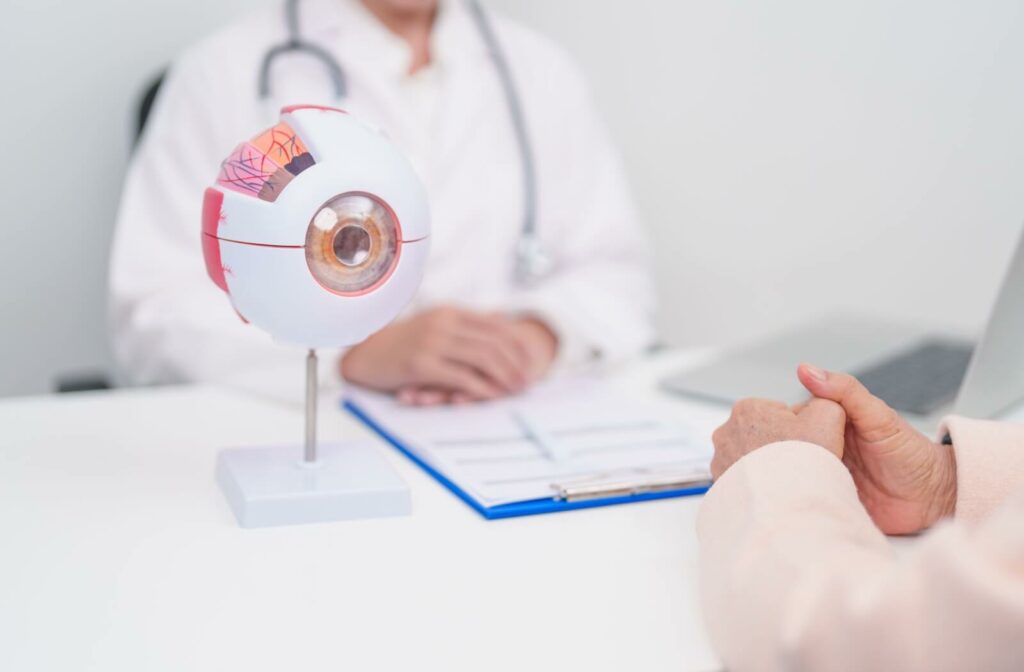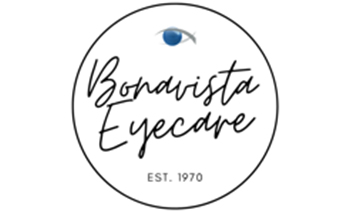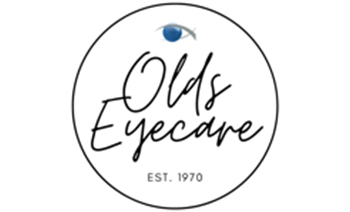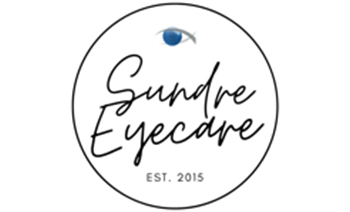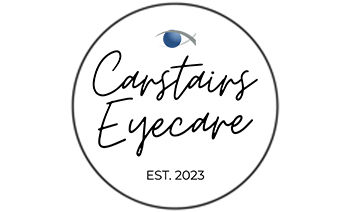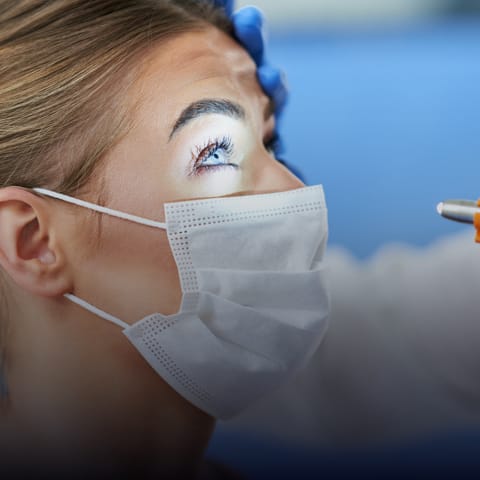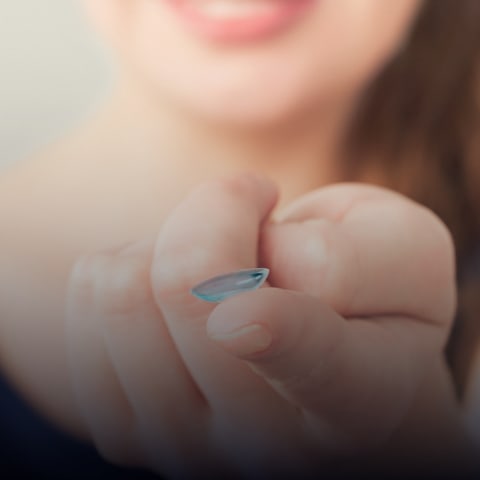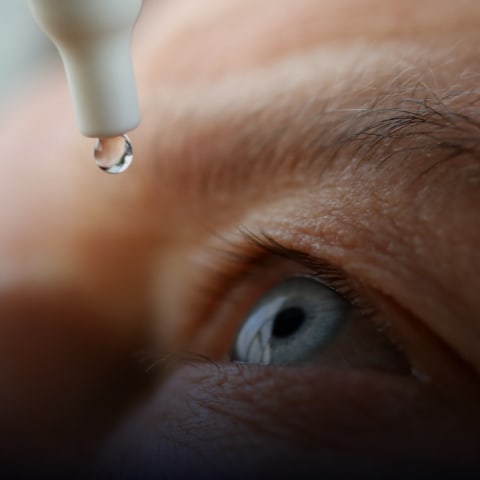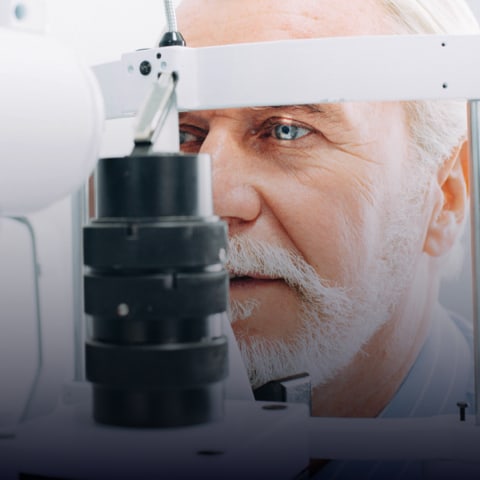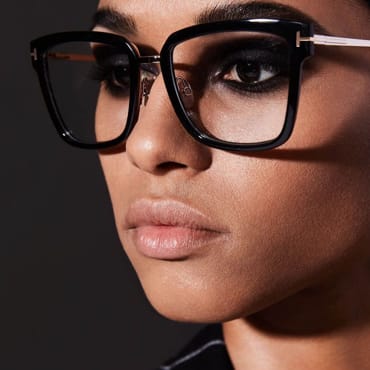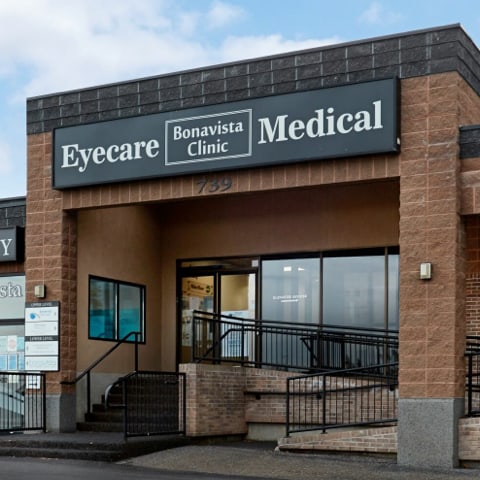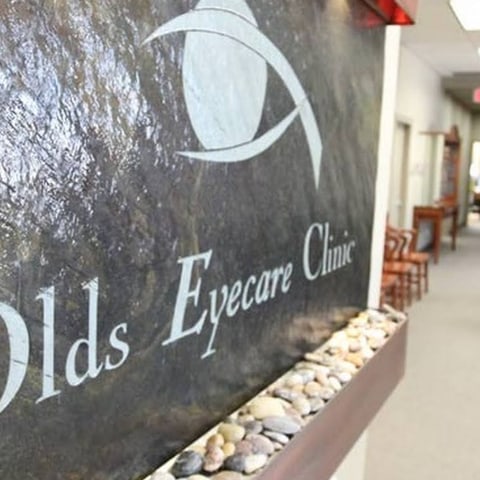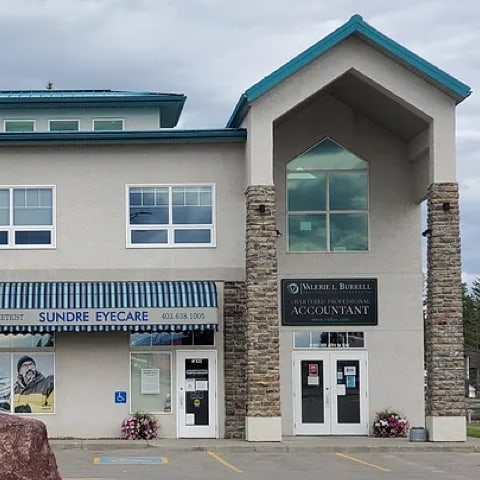Age-related macular degeneration—often called AMD—is a common eye condition. It impacts central vision, which you use for important daily tasks like reading, driving, or recognizing the faces of your loved ones. Understanding this condition is a key step in protecting your sight as you age, which is a core part of our adult and senior eye exams.
AMD is a leading cause of vision loss for people over 55 and affects approximately 2.5 million Canadians. Its prevalence means that many families will navigate this condition at some point. Knowing the signs and how to manage AMD can make a significant difference.
What Is Age-Related Macular Degeneration?
AMD affects a small part of your retina called the macula. The macula is responsible for your sharp, detailed, straight-ahead vision. When the macula is damaged, your central vision can become blurry or distorted, while your peripheral—or side—vision usually stays clear.
Two Main Types of AMD
There are two forms of AMD, and one can sometimes lead to the other. Your eye doctor can tell you which type you or your family member may have.
- Dry AMD: This is the more common type. It happens when the macula gets thinner with age and tiny protein deposits called drusen build up. Vision loss with dry AMD is typically gradual.
- Wet AMD: This form is less common, but it can be more serious. Wet AMD occurs when new, abnormal blood vessels grow under the retina. These vessels can leak blood and fluid, causing rapid and more noticeable vision loss. Wet AMD is a medical emergency and requires prompt treatment.
Symptoms & Risk Factors for Your Family to Know
In its early stages, AMD often has no symptoms. This makes regular eye exams important, as they can detect the condition before you notice changes in your vision. An early diagnosis can help you take proactive steps to care for your sight.
Common Signs of AMD
As the condition progresses, you or a loved one might notice:
- Blurry patches in your central vision
- Straight lines, like a door frame or telephone pole, appearing wavy
- Difficulty seeing colours as brightly as before
- A need for more light when you read or do close-up work
- Dark or empty spots that appear in the centre of your vision
Who Is at Risk?
While age is the biggest factor, other things can influence a person’s risk for AMD. These include:
- Age—the condition is most common in people over 60
- A family history of AMD
- Smoking
- Cardiovascular health conditions
How an Eye Doctor Diagnoses & Monitors AMD
A comprehensive eye exam is the standard way to get a clear diagnosis. We can check the health of your retina and look for early signs of the condition. These checks are a routine part of a thorough eye health assessment.
What to Expect at an Eye Exam
During the exam, your optometrist may dilate your pupils with eye drops. This widens the pupil and gives them a better view of the back of your eye. They will look for drusen and other changes to the macula.
Your optometrist might also use an imaging test called an OCT (ocular coherence tomography) scan. This gives them a detailed, cross-sectional picture of your retina. The test is quick, painless, and provides valuable information.
Monitor Vision at Home
Your eye doctor may give you a tool called an Amsler grid to use at home. It’s a simple chart with a grid pattern. By looking at it regularly, you can spot any new wavy lines, blurry spots, or distortions that might signal a change in your vision.

Manage AMD & Protect Your Vision
While there is no cure for AMD, there are steps you can take to manage the condition and slow its progression. The right approach depends on the type and stage of the disease. Your eye care team can help you find a path that fits your needs.
Lifestyle & Nutrition for Dry AMD
For dry AMD, certain lifestyle choices may help support your eye health.
- A diet rich in leafy green vegetables, colourful fruits, and fish with omega-3 fatty acids is good for your overall health and your eyes.
- You should maintain your cardiovascular health through regular, gentle exercise.
- If you smoke, quitting is one of the most helpful things you can do for your eye health, as smoking increases the risk for various eye diseases.
- Using good quality UV protection while outdoors
Nutritional Supplements
For some people with intermediate or late-stage dry AMD, specific vitamin and mineral supplements may help. These formulas—often known as AREDS2—may slow the disease’s progression. It’s a good idea to discuss supplements with your eye doctor.
Treatments for Wet AMD
The goal for wet AMD is to stop the leaky blood vessels. The most common treatment involves injections of a medication called anti-VEGF into the eye. We can coordinate with a specialist to provide this care to you or your loved one.
New Research & Therapies
Researchers are always exploring new ways to treat AMD. One newer and promising option is MacuMira, which is Canada’s first clinically proven and regulated treatment for dry AMD. At our Eye Care Clinic, we’re excited to be able to offer Macu Mira to support your retinal health.
Common Questions About Life with AMD
A diagnosis of AMD can bring up a lot of questions for families. Understanding the condition can help you feel more comfortable and prepared. Here are answers to some common concerns.
Does AMD Cause Total Blindness?
AMD rarely causes complete blindness, as it doesn’t affect your peripheral vision. It damages your central vision, which can make daily activities difficult—but you will still be able to see things at the edges of your visual field.
Does AMD Affect Life Expectancy?
AMD is a condition that affects your vision, not your overall health or lifespan. It does not shorten a person’s life expectancy. You can continue to live a full life with the right support and resources.
What About Treatment Costs & Coverage?
Provincial health plans often cover medically necessary appointments and treatments for conditions like AMD. However, coverage for specific medications or procedures can vary. It’s a good idea to discuss costs and coverage with your eye doctor and your insurance provider.
How Can We Adapt to Vision Loss?
Low vision rehabilitation can help you or your loved one make the most of your remaining vision. This can include learning to use tools like magnifiers and adjusting the lighting in your home. It’s all about finding new ways to do the activities you enjoy.
You can trust your experience with us at our eye clinic will be in-depth, personal, and unrushed. Our team takes the time to get to know each patient, answer your questions, and provide detailed information about conditions like AMD. We are here to support your family’s vision at every stage.
If you have questions about your family’s eye health or want to contact the team at one of our Eye Care Clinic locations, we can walk you through the process. Schedule your eye exam with us in Calgary, Olds, Sundre, or Carstairs to learn how we can help you.


